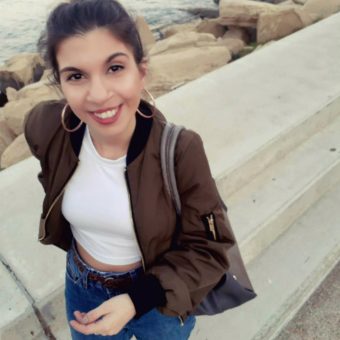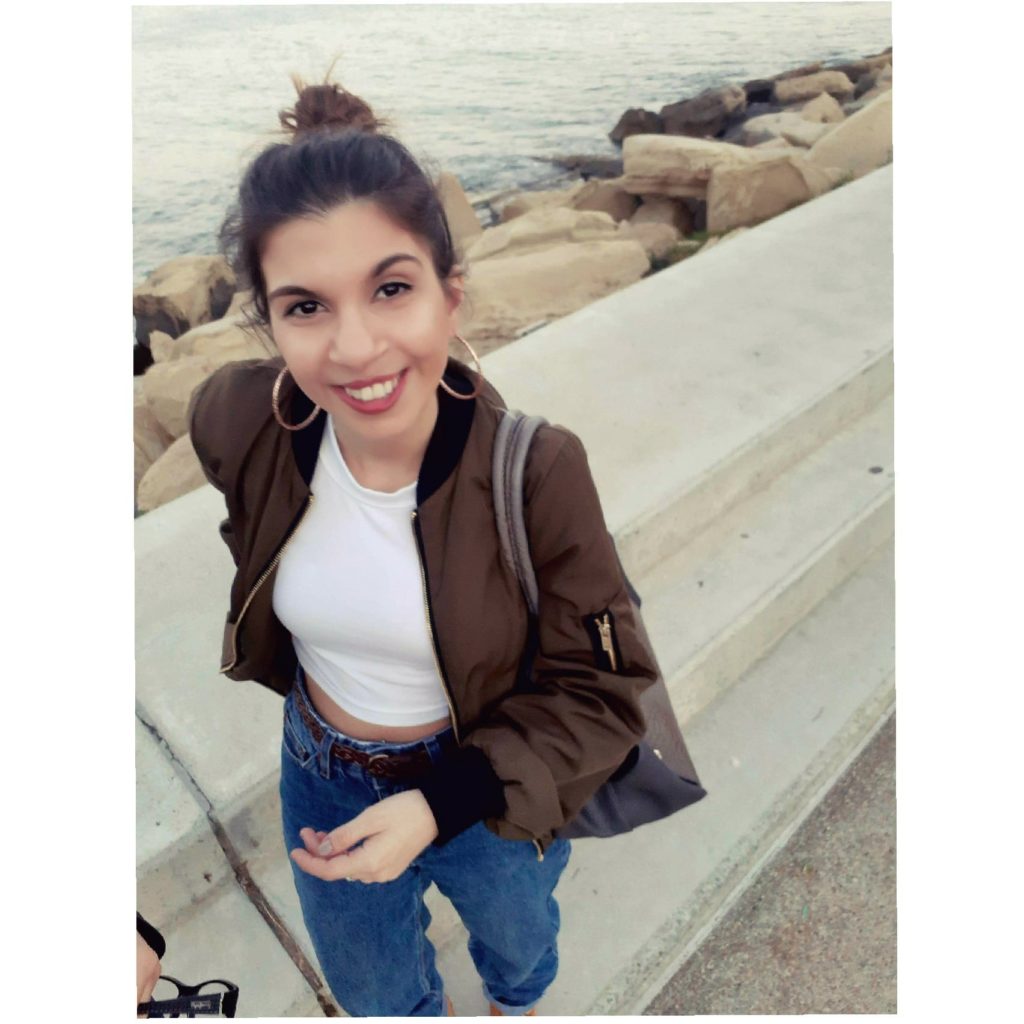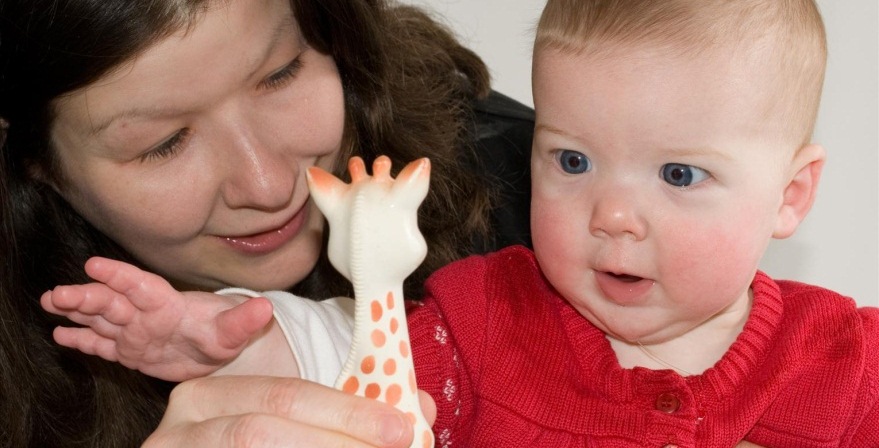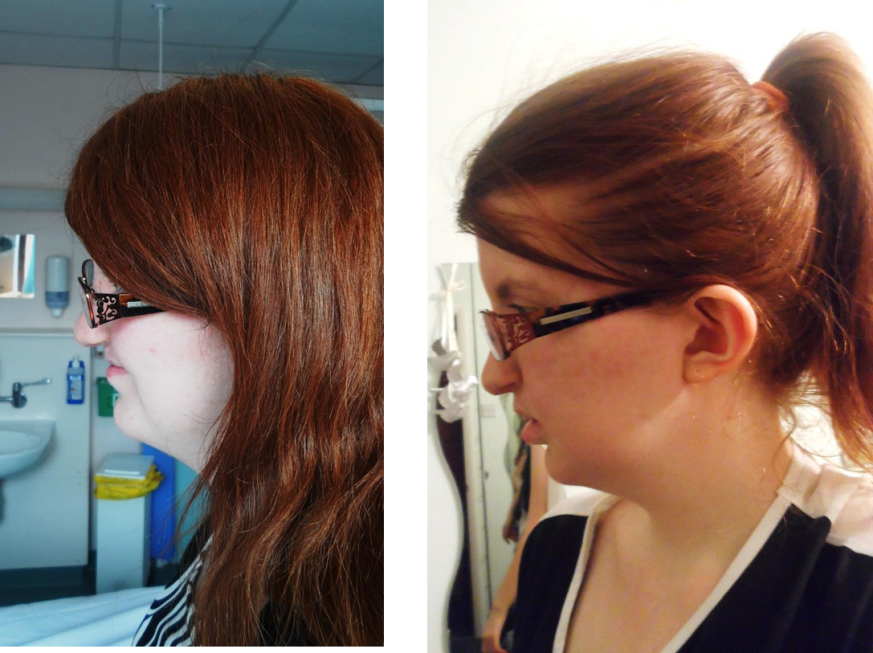
Stavroulla’s Story
“Why does your lip have a funny shape?”
 Recently, my inquisitive 6 year old niece innocently asked me this. I suddenly realised I haven’t been asked this question in years, particularly since I was her age. The question got me thinking, mostly about my smile and myself. I found it intriguing how a child’s brain works, as there’s no filter. Of course the question took me aback, but I simply answered as best I could with a reply of ‘everyone is born differently, these differences are what makes us unique and special’. I also explained how doctors repaired my lip (in a non-gruesome way) leaving me two battle scars to show how strong I am. She lasted two minutes on the subject then went back to her toys!
Recently, my inquisitive 6 year old niece innocently asked me this. I suddenly realised I haven’t been asked this question in years, particularly since I was her age. The question got me thinking, mostly about my smile and myself. I found it intriguing how a child’s brain works, as there’s no filter. Of course the question took me aback, but I simply answered as best I could with a reply of ‘everyone is born differently, these differences are what makes us unique and special’. I also explained how doctors repaired my lip (in a non-gruesome way) leaving me two battle scars to show how strong I am. She lasted two minutes on the subject then went back to her toys!
Noticing the innocence with which a 6 year old views the world, without judgement or labels, fascinates me. As does the way children begin to notice disparities at particular ages. Everyone is born differently, labels are created via our own thoughts to distinguish these variances. In my 24 years of living with a bilateral cleft lip and palate, I have been particularly lucky in my upbringing, having a massive Greek family to help normalise my condition and look after me after every operation was a blessing in lots of ways. Personally, I’ve never felt like the outsider in society until someone asks about or points out my scars. It’s the only thing that takes me back to my own misunderstandings of why I was born this way as a child. To put it simply if an adult asks you ‘why’ I’ve learnt it’s best to say ‘nobody knows’ as extensive research is still ongoing today to pinpoint the reason. However when a child asks, it’s a different story, as you want to impart a little wisdom somehow.
To put it simply if an adult asks you ‘why’ I’ve learnt it’s best to say ‘nobody knows’ as extensive research is still ongoing today to pinpoint the reason. However when a child asks, it’s a different story, as you want to impart a little wisdom somehow.
Without knowing, my niece provoked a sensitive feeling for me regarding this subject. I realised trying to explain the condition to a young girl, attempting to learn more about the world, was much more difficult than expected. Perhaps I was caught off-guard, as I never view my cleft as something that separates me from my family or friends. However, at times answering this question seems like a challenge and it really shouldn’t be. My main reason for writing this article is to provide a little hope and help to those facing this question on a daily basis, those who are tired of having to explain their differences for the purpose of educating others. I understand the impact this can have on negative thinking and I advocate self-love every day! Trust me I’m still learning but what I’ve come to realise is taking these negative thoughts and putting them to good use is a powerful thing. For example, when someone asks these questions answering with honesty usually prevails. After all, it’s our job to raise awareness, if we don’t then who will? Of course it’s easier said than done! Personally, it’s been a long journey to accept my smile and appearance but I can finally say I’m happy. Having my final operation last year brought a joy to my life that I can’t explain. As they say when one chapter closes another opens, and life’s too short to spend time worrying about appearance. You leave behind a legacy regarding your personality (not your looks) and how you choose to handle these situations reflects this. So I thank my niece for asking me this question, your inquisitiveness sparked a light in me.
Personally, it’s been a long journey to accept my smile and appearance but I can finally say I’m happy. Having my final operation last year brought a joy to my life that I can’t explain.
I will aim to do more to provide awareness, especially through the wonderful charity CLAPA (Cleft Lip and Palate Association). Mostly as, worldwide, not many people have access to a charity of this measure. We owe it to the next generation to help normalise the subject, to enable and promote a healthier mindset regarding this condition, using inclusivity as the key. My hope for more information and exposure regarding cleft being highlighted in mainstream media, magazines, adverts etc, is a progressive one. It’s wishful thinking on my part but I do believe more has to be done towards visibility and represent our community with a sense of normality. CLAPA provide amazing support and event days for families and children with cleft. This is, steadily, resulting in change, enabling organic conversations within the community. I can’t thank CLAPA enough for its high degree of support over the years; it’s become a huge part of my life in numerous ways. Helping them with the fight for inclusivity is going to be a lifelong goal of mine that’s for sure!
Thanks so much to Stavroulla for getting in touch to share her story with CLAPA. If you’d like to share your story you can share it here through our website.

One response to “Stavroulla’s Story”
Leave a Reply
You must be logged in to post a comment.



I really really inspire when I saw your page.